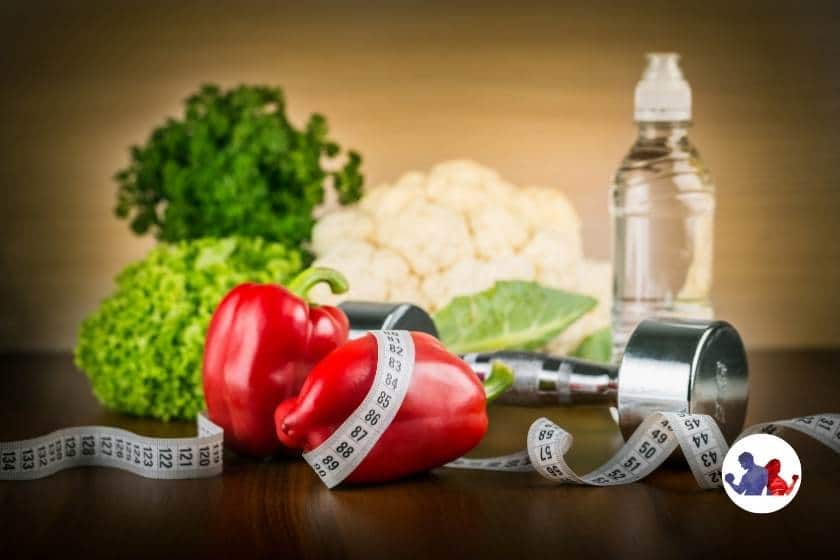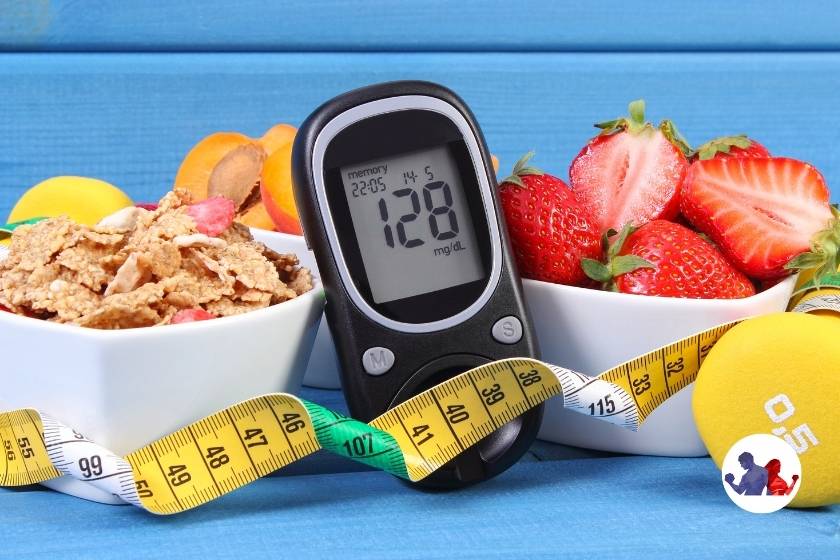If you’ve ever tried to gain weight and build muscle, you’ll know how much of a challenge forcing food down can be. Your body gets used to a certain diet, and suddenly changing that can make your mouth and stomach want to shut up shop.
When your body is already sensitive to certain foods, that challenge only gets harder.
Insulin is the hormone that breaks down the carbohydrates we eat, and if you have diabetes, you don’t produce any of your own. This means carbohydrates stay in the bloodstream and cause your blood sugar to go too high.
Here we look at how people with diabetes can eat more food without running the risks high blood sugar brings – bulk up without ruining blood sugar if you will. It’ll talk a lot about food, a little about medicine, and a tiny bit about lifting massive weights.
Table of Contents
What causes type 1 diabetes?
Type 1 diabetes happens when your body’s immune system starts attacking and destroying the insulin-producing cells of your pancreas. There’s no known reason why that happens, but scientists believe it can be caused by genetic or environmental factors, such as stress or a virus.
Type 1 diabetics have to give themself insulin, either through a pen or a pump, whenever they eat something containing carbohydrates. Having too little insulin and their blood sugar will go too high, have too little, and fall too low. Both can be problematic when trying to gain weight.
What are the risks of high blood sugar?
High blood sugar is caused by having too little insulin to break down the sugar in your bloodstream. Generally, blood sugar levels above 8mmol/L are considered to be high.
If your blood sugar stays too high for too long, it can lead to a world of health problems. Blindness, kidney failure, amputations, and ultimately death can all be caused by persistent high blood sugar.
What are the risks of low blood sugar?
Low blood sugar can cause things called hypoglycemic attacks. These, if left untreated, can cause you to pass out and end up in a coma. If you suffer from low blood sugar often, your body can lose the ability to spot the symptoms, increasing your risk of hypoglycemia and making your condition much harder to manage.

So, how can you eat more food without getting high blood sugar?
There are two main ways you can eat loads without raising your blood sugar:
- Good insulin management.
- Good food selection.
Good insulin management
First, let’s look at insulin management. The main key here is patience. Insulin can work away in your body for up to two hours, meaning you might see an initial spike in your blood sugar after eating. Don’t be tempted to take more insulin – this can lead to low blood sugar, which, as we know, is pretty rubbish.
Regularly checking your blood sugar will help you learn what your body is likely to do after eating, leading to point number two…
Good food selection
Eating the right food can help you gain weight without eating too many, or any, carbohydrates. Food like meat and fish is a naturally high source of protein and healthy calories. 100g of chicken breast, for example, contains 165 calories and zero carbohydrates.
Beans, lentils, eggs, whole milk, cheese and full-fat yoghurt are also high in calories, while all being low in carbohydrates. If your food contains no carbs, you don’t need any insulin to eat it. This means you can eat as much as you like without worrying about high or low blood sugar.
Other food that’s great for weight gaining includes potatoes, rice, and pasta, but they are all high in carbs and require insulin when you eat them. That doesn’t mean you have to avoid them – don’t eat them too often to avoid the risk of taking too much insulin and slipping into hypo.
High-calorie food that’s low in carbohydrates
The ultimate for any diabetic weight gainer is food that’s high in calories and low in carbs. You can eat as much of this as often as you like, without needing to take any insulin and risk going into hypo.
Extra weight, no extra danger.
- Red meat – Red meat is a great source of protein and calories. Things like steak, beef and beef brisket have been a bodybuilder’s favourite meal for years, with their high-fat levels helping them bulk up while also tasting great.
- Whole milk – A cold glass of whole milk is not only refreshing but also an easy way to pack the calories into your diet. There are 370 calories in one pint of whole milk, while it also contains 22g of fat. Add whole milk to a protein shake for even more benefits.
- Nuts – Nuts are tiny little taste bombs of calories, and just a couple of handfuls a day can seriously improve your intake. A 50g portion of walnuts contains a whopping 327 calories, and you can easily add them to your morning cereal.
- Salmon and other oily fish – Salmon is packed full of protein and healthy fats and tastes great however you cook it. Pan-fried, baked, smoked or canned, there’s no bad way to eat it. Just one salmon fillet can give you 250 calories. And oh boy, they’ll taste good.
- Avocados – In just one avocado, you’ll find 322 calories. They taste great in salads, as a side dish, or mashed up into guacamole. They’re also a fatty little fruit, with 29g of the stuff helping add bulk to your body.
- Sugar-free protein shakes – Lots of protein shakes are packed full of sugar. This stops them tasting like, well, protein shakes. Specialist shakes are available, though, and they’ll give you a great burst of protein without needing any insulin.

Can people with diabetes lift weights?
So, you’re eating right, but now you want to lift right too. People with diabetes can work out the same as anyone else; they need to do it carefully.
If your blood sugar is too high during a workout, your body will fatigue easily and struggle to do what you ask it to. It can ache, feel tired and not have the energy needed to lift anything.
Likewise, if your blood sugar is low during a workout, it will only get lower. Your body will burn off any remaining sugar and risk you go into hypo. You don’t want to pass out underneath something heavy (trust us, we’ve been there).
Check your blood sugar before you work out. If it’s too low, correct it and wait for it to get higher. If it’s too high, have a little insulin. Generally, you want your levels to be between 5.4 and 9 before working out.
The Bottom line
Type 1 diabetics can gain weight without eating excess carbohydrates. Whether it’s for physical or medical reasons, by choosing the right food and keeping a close eye on your blood sugar levels, you can pile on pounds of muscle without risking bad blood sugar.
Look for food that’s high in calories, such as red meats, oily fishes, nuts and whole milk.
Only eat high-carb foods occasionally, as part of the main meal when you’re not planning to exercise straight after.
Always check your blood sugar levels before working out. Your body will work hard for you if you work hard for it.
Author:
Ash Billinghay is the owner of https://www.typenone.co.uk/. A type 1 diabetic for over 13 years, he’s fallen over more times than he can remember. Since being diagnosed, he’s gained over seven stone through a healthy diet, consistent workout routine and good diabetes management. He falls over less now.
